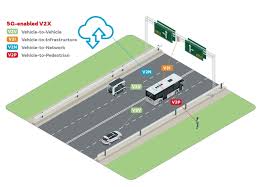VNF Infrastructure Explained: Building the Foundation of Virtual Networks
telcomatraining.com – As businesses and service providers race to embrace digital transformation, traditional network infrastructures are becoming less flexible and more expensive to maintain. Enter Virtual Network Functions (VNFs)—the cornerstone of modern, agile network services. In this article, we’ll explore what VNF infrastructure is, how it works, and why it’s vital for building scalable and efficient virtual networks.
What is VNF Infrastructure?
VNF stands for Virtual Network Function, a software implementation of network functions that traditionally ran on proprietary hardware. Functions like firewalls, load balancers, and routers are now deployed as virtual machines or containers on general-purpose servers. The VNF infrastructure is the underlying environment that supports these virtual functions, providing the necessary compute, storage, and networking resources.
This infrastructure typically includes:
- NFVI (Network Functions Virtualization Infrastructure): The physical and virtual resources (servers, storage, switches) where VNFs operate.
- Virtualization layer: Hypervisors or container engines (like KVM, VMware ESXi, or Docker) that enable multiple VNFs to run on the same hardware.
- Orchestration and management tools: Software that automates deployment, scaling, monitoring, and lifecycle management of VNFs.
Together, these elements form a flexible and programmable network environment designed to replace rigid hardware appliances.
Why VNF Infrastructure Matters
The shift from hardware-based network functions to virtual ones brings several significant benefits:
- Scalability and Flexibility
VNF infrastructure allows service providers to scale services up or down on demand. There’s no need to buy new hardware for every network upgrade—just deploy new VNFs. - Cost Efficiency
By leveraging commodity hardware and open-source solutions, organizations reduce capital and operational expenditures. Maintenance becomes simpler, and the need for specialized equipment is eliminated. - Faster Time to Market
VNFs can be deployed in minutes rather than weeks. This agility accelerates the launch of new services and features, giving companies a competitive edge. - Enhanced Automation
Orchestration platforms like OpenStack or Kubernetes allow complete automation of network services, leading to fewer manual interventions and reduced human error.
Key Components of a VNF Infrastructure
To fully understand how VNF infrastructure works, let’s break down its essential components:
- Compute Resources: Physical servers equipped with powerful CPUs and memory to run VNFs efficiently.
- Storage Systems: High-performance storage solutions to manage data for VNFs, including databases, logs, and configuration files.
- Network Fabric: High-speed networking between VNFs and external systems to ensure low-latency and high-throughput connections.
- Virtualization Platform: Software that abstracts the physical hardware, allowing multiple VNFs to run in isolated environments.
- Orchestrator: Manages the lifecycle of VNFs, including provisioning, scaling, healing, and retiring services.
- Monitoring and Analytics: Tools to track performance, detect anomalies, and optimize resource allocation dynamically.
VNF Infrastructure and 5G Networks
One of the driving forces behind the adoption of VNF infrastructure is 5G technology. 5G networks rely on network slicing, edge computing, and low-latency communication, all of which require a highly virtualized and flexible infrastructure. VNF plays a crucial role in enabling these capabilities by allowing service providers to dynamically allocate resources based on real-time demands.
Challenges and Considerations
Despite its advantages, implementing VNF infrastructure is not without challenges:
- Performance Overhead: Virtualization can introduce latency and resource inefficiencies compared to bare-metal hardware.
- Complex Management: Managing a distributed, virtualized network requires robust orchestration and security strategies.
- Interoperability Issues: VNFs from different vendors may not seamlessly integrate, making standardization essential.
Conclusion
VNF infrastructure is the backbone of today’s virtualized and software-defined networks. By replacing legacy hardware with flexible, software-based functions, organizations can innovate faster, cut costs, and adapt to changing market demands. As technologies like 5G, IoT, and edge computing continue to grow, investing in a strong VNF foundation is no longer optional—it’s essential for staying ahead in the digital era.







